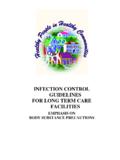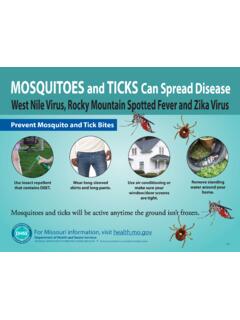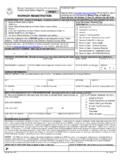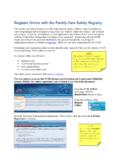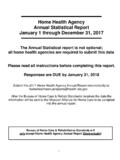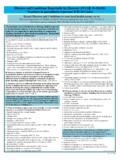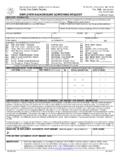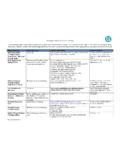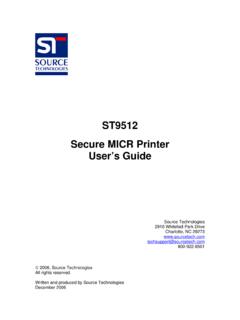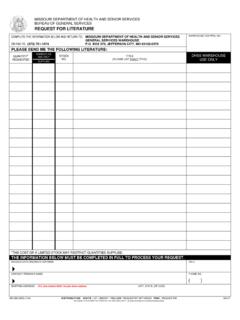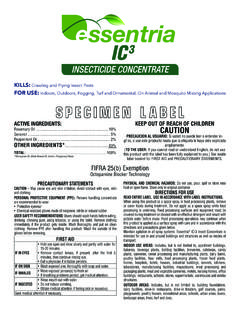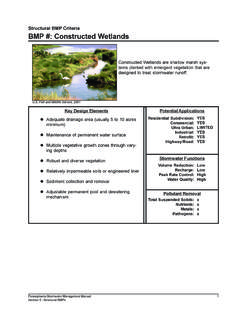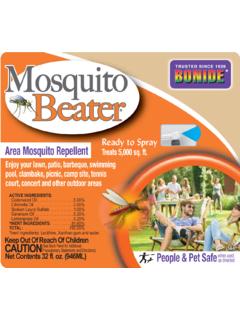Transcription of Prevention and Control of Communicable Diseases …
1 Prevention and Control of Communicable Diseases A Guide for School Administrators, Nurses, Teachers, Child Care Providers, and Parents or Guardians Department of Health and Senior Services Bureau of Communicable disease Control and Prevention Jefferson City, MO 65102. (573) 751-6113. (866) 628-9891. e-mail: Prevention and Control of Communicable Diseases A Guide for School Administrators, Nurses, Teachers, Child Care Providers, and Parents or Guardians Editors: Barbara Wolkoff Autumn Grim Harvey L. Marx, Jr. Department of Health and Senior Services Bureau of Communicable disease Control and Prevention Jefferson City, MO 65102. (573) 751-6113. (866) 628-9891. e-mail: FOREWORD. HELP Control Communicable Diseases . Vaccines are now available to Control the majority of Diseases that have caused illness and death in children in the past.
2 Medical treatments help to Control many others, but schools and child care centers must continue to play an important role in controlling the spread of Communicable disease . By enforcing the state Communicable disease regulations, excluding children who are ill, and promptly reporting all suspected cases of Communicable disease , personnel working with children can help ensure the good health of the children in their care. Be alert for signs of illness such as elevated temperature, skin rashes, inflamed eyes, flushed, pale or sweaty appearance. If a child shows these or other signs of illness, pain or physical distress, he/she should be evaluated by a health care provider. Children or staff with Communicable Diseases should not be allowed to attend or work in a school or child care setting until they are well.
3 Recommendations for exclusion necessary to prevent exposure to others are contained in this document. Please report all suspected cases of Communicable disease promptly to your city, county or state health department. Prompt reporting is the first step to insuring appropriate Control measures. Additional information concerning individual Communicable Diseases is contained in the Communicable disease Investigation Reference Manual located on the Department of Health and Senior Services website at: ACKNOWLEDGEMENTS. We are grateful to the Hennepin County Human Services and Public Health Department, Hopkins, Minnesota, who allowed us to use their materials in the development of this manual. i REVIEWER LIST. We would like to thank the following public health professionals for their valuable comments and suggestions in reviewing this manual.
4 Bureau of Environmental Health Services Mark Jenkerson Bureau of HIV, STD, & Hepatitis Melissa Van Dyne Office of Veterinary and Public Health Karen Yates Section for Child Care Regulation Sue Porting Section of Epidemiology for Public Health Practices George Turabelidze, MD, PhD. Center for Emergency Response and Terrorism (CERT). Robert H. Hamm, MD, MPH. Bureau of Communicable disease Control and Prevention Eddie Hedrick Bureau of Immunization Assessment and Assurance Susan Kneeskern, RN. Bureau of Genetics and Healthy Childhood Marge Cole, RN, MSN, FASHA. Bureau of WIC and Nutrition Services Kathy Mertzlufft Section for disease Control and Environmental Epidemiology Kristi Campbell Office of Public Information Jacqueline Lapine ii INTRODUCTION. The number of families with young children in out-of-home childcare has been steadily increasing.
5 A. variety of infections have been documented in children attending childcare, sometimes with spread to caregivers and to others at home. Infants and preschool-aged children are very susceptible to contagious Diseases because they 1) have not been exposed to many infections, 2) have little or no immunity to these infections, and 3) may not have received any or all of their vaccinations. Close physical contact for extended periods of time, inadequate hygiene habits, and underdeveloped immune systems place children attending childcare and special needs settings at increased risk of infection. For instance, the spread of diarrheal disease may readily occur with children in diapers and others with special needs due to inadequate handwashing, environmental sanitation practices, and diaper changing.
6 This manual contains 54 disease fact sheets for providers about specific infectious disease problems. These fact sheets have been designed to provide specific disease Prevention and Control guidelines that are consistent with the national standards put forth by the American Public Health Association and the American Academy of Pediatrics. Some indicate when immediate action is necessary. Please note that on the PROVIDER fact sheets, for any Diseases labeled "REPORTABLE", the provider MUST. consult with the LOCAL or STATE HEALTH DEPARTMENT. After receiving approval from the local or state health department, the PARENT/GUARDIAN fact sheets would be posted or distributed to the parents/guardians. In addition to the provider fact sheets, 47 of the fact sheets are available in a format specifically for parents/guardians of childcare and school-aged children.
7 PARENT/GUARDIAN is written in the upper right hand corner. This manual contains information for both staff and parents/guardians on numerous topics. See Table of Contents for location of specific information. This document replaces all previous versions of the Prevention and Control of Communicable Diseases , A Guide for School Administrators, Nurses, Teachers, and Child Care Providers . DISCLAIMER - In clinical practice, certain circumstances and individual cases require professional judgment beyond the scope of this document. Practitioners and users of this manual should not limit their judgment on the management and Control of Communicable disease to this publication and are well advised to review the references that are listed, and remain informed of new developments and resulting changes in recommendations on Communicable disease Prevention and Control .
8 Iii TAKE TO BEGINNING OF DOCUMENT. TABLE OF CONTENTS. SECTION 1 GUIDELINES: STAFF AND CHILDREN. Exclusion of Ill Children and Staff: General 1-2. Childcare 3-10. Schools 11-17. Communicable disease Concerns for Pregnant Women 18. Cytomegalovirus (CMV) and Pregnancy 19-20. Fifth disease (Parvovirus B19) and Pregnancy 21-22. Hand, Foot, and Mouth (Enteroviral Infections) and Pregnancy 23-24. Hepatitis B Virus and Pregnancy 25-26. Human Immunodeficiency Virus (HIV) and Pregnancy 27-28. Rubella (German Measles) and Pregnancy 29-30. Varicella-Zoster Virus (Chickenpox and Shingles) and Pregnancy 31-32. Human Biting Incidents 33-34. SECTION 2 GUIDELINES: ENVIRONMENT. Cleaning, Sanitizing, and Disinfection 35-39. How to Mix Bleach Solutions 40. Recommended Cleaning Schedule 41. Diapering 42-44. Diapering Procedure 45.
9 Changing Pull-ups/Toilet Learning Procedure 46. Food Safety in Childcare Settings and Schools 47-49. Pets in Childcare Settings and Schools 50-52. Swimming and Wading Pools 53. SECTION 3 GUIDELINES: Prevention AND Control . Covering Your Cough 54. Cover Your Cough Poster 55. Gloving 56. Handwashing 57-58. When to 59. How to 60. Infection Control Guidelines 61. Infection Control Recommendations for School Athletic Programs 62-63. Misuse of Antibiotics 64-66. Safe Handling of Breast Milk 67-68. SECTION 4 Communicable disease REPORTING. Missouri Reporting Rule 69. Diseases and Conditions Reportable in Missouri 69-71. Reports from Parents/Guardians 71. iv SECTION 4 Reports from Staff 71. (CONTINUED) Reports to Local/State Health Department 72. Local and State Health Department disease Prevention and Control Resources in 72.
10 Missouri Local Health Department Telephone Numbers 72. Department of Health and Senior Services District Offices 72. SECTION 5 Communicable disease Control AND MANAGEMENT. Control and Management of Exposures and Outbreaks 73. Reports to Local/State Health Departments 73. Notification of Parents/Guardians and Childcare or School Staff 73-74. Sample Line List 75. SECTION 6 Communicable disease FACT SHEETS. * Diseases Reportable to a Local or State Health Department in Missouri How and When to Use 76. *Anaplasmosis (see Tick-Borne disease ). Bed Bugs 77-78. Bronchitis, Acute (Chest Cold)/Bronchiolitis 79. Parent Fact Sheet 80. *California Group Encephalitis (see Mosquito-Borne disease ). *Campylobacteriosis 81-82. Parent Fact Sheet 83. *Chickenpox (Varicella) 84-85. Parent Fact Sheet 86. Conjunctivitis (Pinkeye) 87-88.
